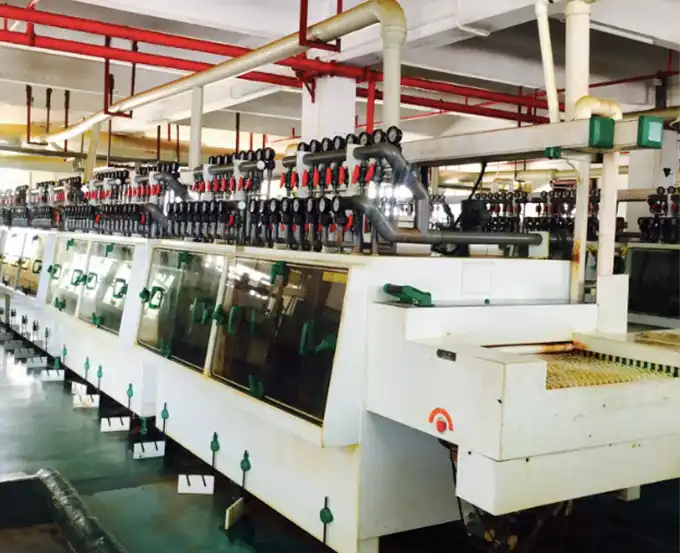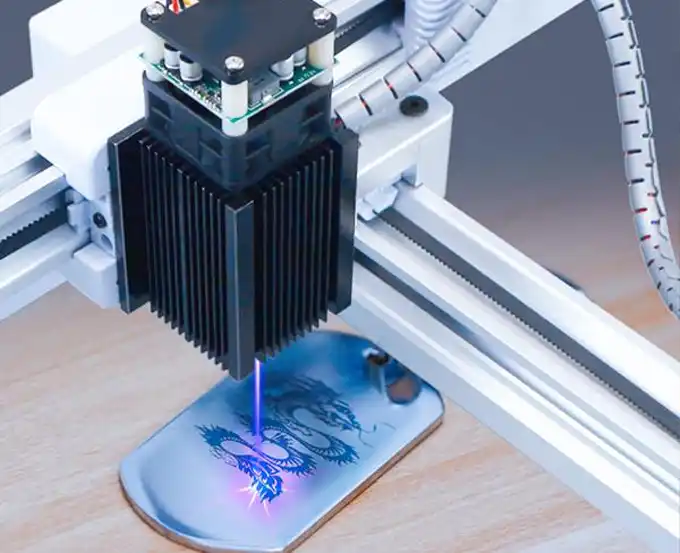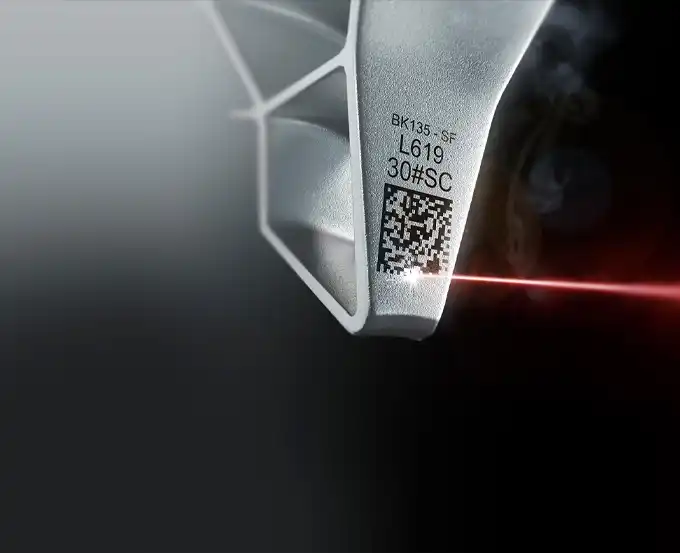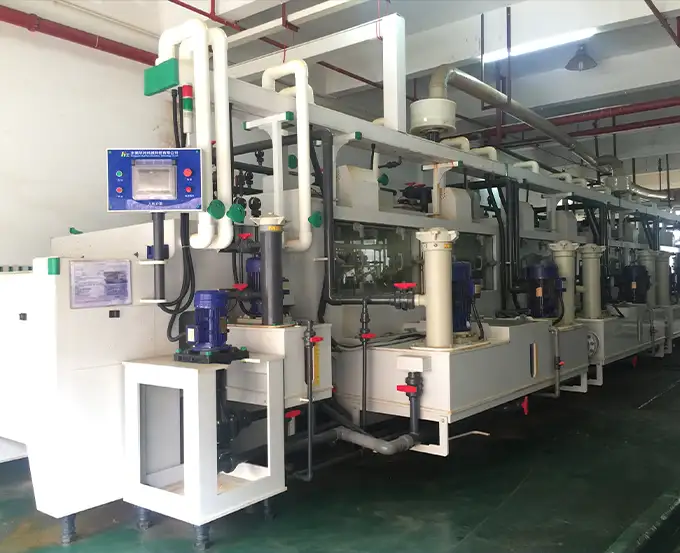How to choose metal etching and metal engraving ? Before considering this question, we should first think about several factors: the scale of the project, the metal material needed, and the fineness and complexity of the patterns. After pondering these questions, you will have the corresponding answers. Below, TMN will provide a series of introductions and comparisons for these two processes to help you make a better decision.
What is Metal Etching?
Metal etching, also known as photochemical etching, involves processes of exposure, development, etching, and stripping. It was first used to manufacture intaglio printing plates such as copper and zinc plates, and it is widely used to reduce the weight of instrument panels or to process nameplates and other thin workpieces. With continuous improvements in technology and equipment, the etching process is now used in the manufacturing of precision parts in aerospace, military, automotive, and semiconductor industries.
Metal etching is a stress-free manufacturing process because it removes excess metal material through chemical reactions rather than stamping or high temperatures. This process does not involve mechanical or thermal stress, thus maintaining the original physical properties and structural integrity of the metal. Additionally, metal etching can uniformly remove material without creating stress concentration points, which is crucial for manufacturing tight and complex parts.

Metal etching is suitable for a variety of metals and alloys because it uses specific chemical solutions to dissolve the metal. Each solution can be optimized and adjusted according to the characteristics of the material to be processed. By selecting the appropriate etching solution and controlling the reaction time, it is possible to effectively etch a variety of materials including stainless steel, copper, aluminum, and nickel alloys. Moreover, whether it is thin films or thick plates, uniform and precise material removal can be achieved by adjusting the etching time and solution concentration.
Metal etching can be used for mass production due to its high repeatability and scalability. Firstly, multiple metal plates can be processed simultaneously during the etching process by placing multiple metal plates in the etching tank, allowing the processing of several parts at the same time. Secondly, etching templates can be accurately reproduced and applied to a large number of metal plates, ensuring pattern consistency and precision on each plate. Thirdly, the photochemical etching process is highly automated, with key parameters such as etching time, solution concentration, and temperature controlled by automated equipment, ensuring the quality and consistency of each batch. These factors enable metal etching to efficiently produce large quantities of precision parts, making it suitable for large-scale industrial production.
Read more: The Photo Chemical Etching Process

What is Metal Engraving?
In this context, metal engraving refers to the laser engraving process. Metal engraving is based on CNC (Computer Numerical Control) technology, using lasers as the processing medium. By focusing the laser beam, light energy is converted into heat energy, evaporating or ablating the desired pattern or text on the metal surface. The development of laser technology has greatly improved the precision and efficiency of metal engraving. It is widely used in electronic products, medical devices, the automotive industry, jewelry, and other metal surface engraving applications.
The metal engraving process is simple, yet the technique is complex. The process is relatively straightforward because it only requires preparing design files, setting the laser engraving machine parameters, and executing the engraving. However, the actual complexity lies in the interaction between the laser and the metal material. Different metals have varying absorption rates for the laser, necessitating adjustments in laser power, pulse frequency, and focal length to ensure precise engraving results. Additionally, precise cooling and thermal management techniques are needed to prevent excessive heat from causing metal deformation or damage. These factors contribute to the complexity of the metal engraving process.

Metal engraving can process a variety of metal materials because the laser has highly concentrated and controllable energy, allowing for fine cutting and engraving on the metal surface. However, metals with high reflectivity, such as copper, silver, gold, and aluminum, have poorer processing results. These metals reflect most of the laser energy, preventing the laser beam from effectively concentrating on the material surface, leading to insufficient energy for effective engraving and thus reducing laser processing efficiency. Therefore, special coatings or specific wavelengths of lasers are often used to increase laser processing efficiency when engraving these highly reflective metals.
Like metal etching, metal engraving is also suitable for large-scale production, mainly due to its high speed, high precision, and automation characteristics. Metal engraving requires no contact, reducing wear and tool replacement common in traditional mechanical processing, thereby lowering downtime and maintenance costs. Additionally, the laser beam can move quickly and position precisely, allowing complex patterns to be engraved in a short time. Modern laser engraving machines are typically equipped with advanced control software, enabling automated operation and batch processing. Simple programming can complete large-scale repetitive tasks, significantly improving production efficiency and consistency.

Differences Between Metal Etching and Metal Engraving
From the above introduction, it is clear that there are fundamental differences between these two technologies in terms of process and application. Metal etching removes excess material through chemical reactions between etching solutions and metal materials, maintaining the physical properties and structural integrity of the metal. On the other hand, metal engraving uses a focused laser beam to evaporate or ablate the metal surface, requiring precise adjustments of laser power, pulse frequency, and focal length based on the material characteristics.
Material Suitability:
Metal etching is suitable for a wider range of metals and alloys. By adjusting the etching solution and time, it can achieve uniform material removal for various thicknesses and hardness levels. Metal engraving, while also capable of processing multiple metals, has reduced effectiveness on high-reflectivity metals. Special coatings or specific laser wavelengths are often required to improve processing efficiency for these reflective materials.
Precision and Complexity:
Both metal etching and metal engraving are high-precision manufacturing processes capable of creating intricate patterns and text on metal surfaces. However, due to the high-temperature effects of laser engraving, precise cooling and thermal management are needed to avoid metal deformation or damage. In contrast, metal etching is a stress-free manufacturing process that preserves the metal’s original physical properties and structural integrity.
Production:
Both metal etching and metal engraving do not require molds and can use automated equipment to control key parameters, making them suitable for efficient mass production. However, metal engraving is more commonly used for surface engraving applications, while metal etching can produce a broader range of precision components.
That concludes the comprehensive introduction to metal etching and metal engraving. I believe you now have a clearer understanding of how to choose between metal etching and engraving for your needs.
About TMN
TMN was founded in 2011 ,as a leading photo chemical etching company in China ,TMN has own etching building for more than 4000㎡ with 3 floors ,5 fully automatic photo etching production lines with length of 39 meters ,more than 100 well-experienced workers,professional degree-qualified engineers and chemists team .
To reduce the production time from prototypes to high volume quantity for customers, TMN has individual large warehouse to amass a variety of raw materials with different thickness from 0.01mm to 2.0mm ,once getting the design file ,TMN could prepare photo-toolings and make the prototypes within 6 hours.
TMN etched parts and sheets have been exported to different countries all over the world,the main marketings are United States ,England ,Germany ,Switzerland ,Austra ,France,Hungery,Isreal,Singapore,Vietnam,Malaysia,Thailand and so on.TMN has enough experiences to arrange delivery and prepare relative documents and COC certificates for Customs clearance and import checking issue.
If you have any needs for metal etching, you can easily contact us by phone, WeChat and WhatsApp at +8613603056883; for inquiries, please email lydia.sales1@tmnetch.com; lydia.sales1@tmnetch.com
Note: Learn more about TMN Metal Processing Services

